UNDERLAY

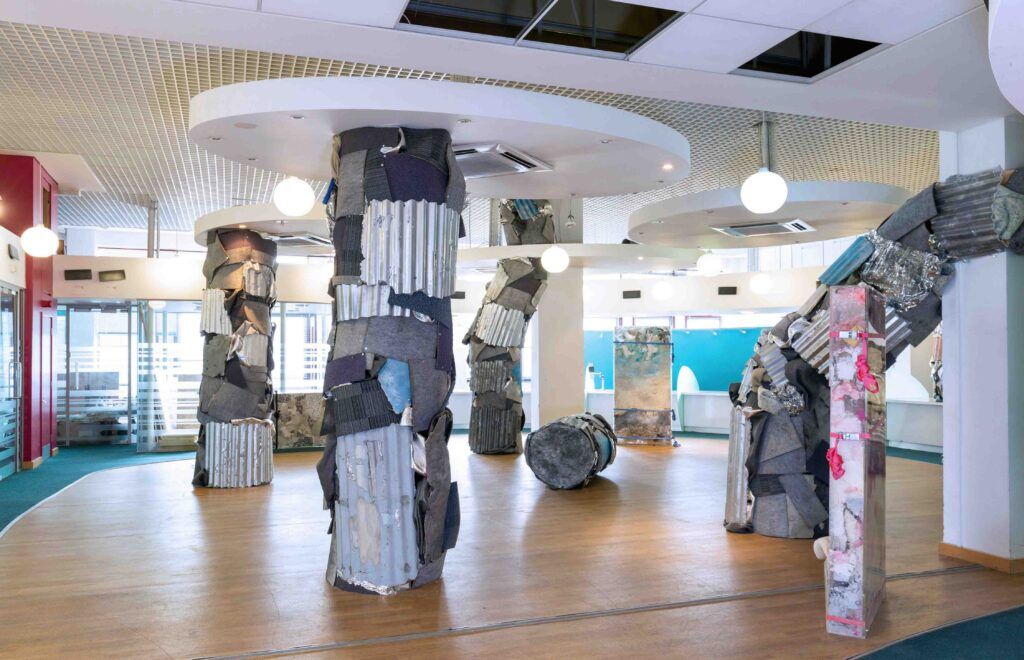




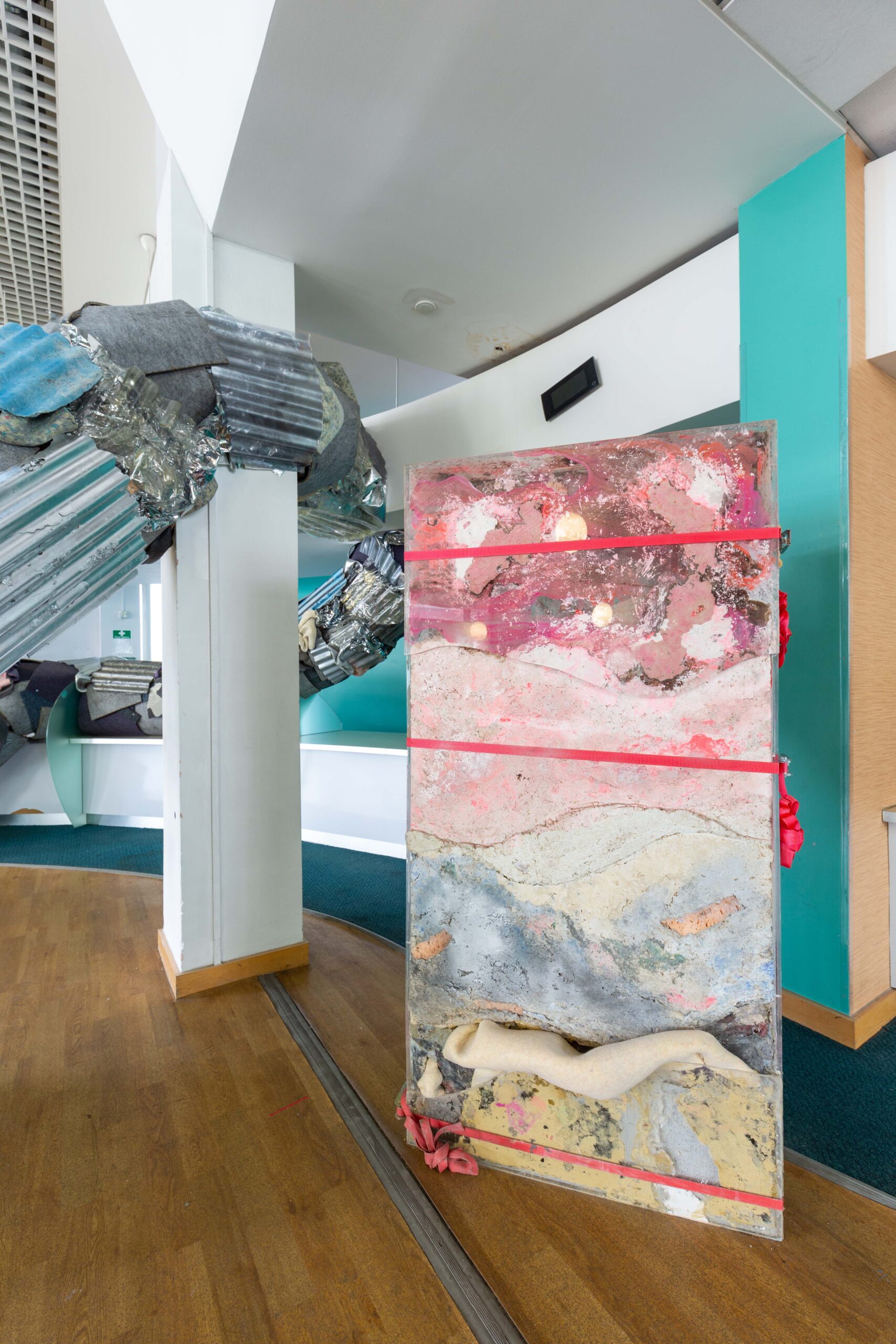
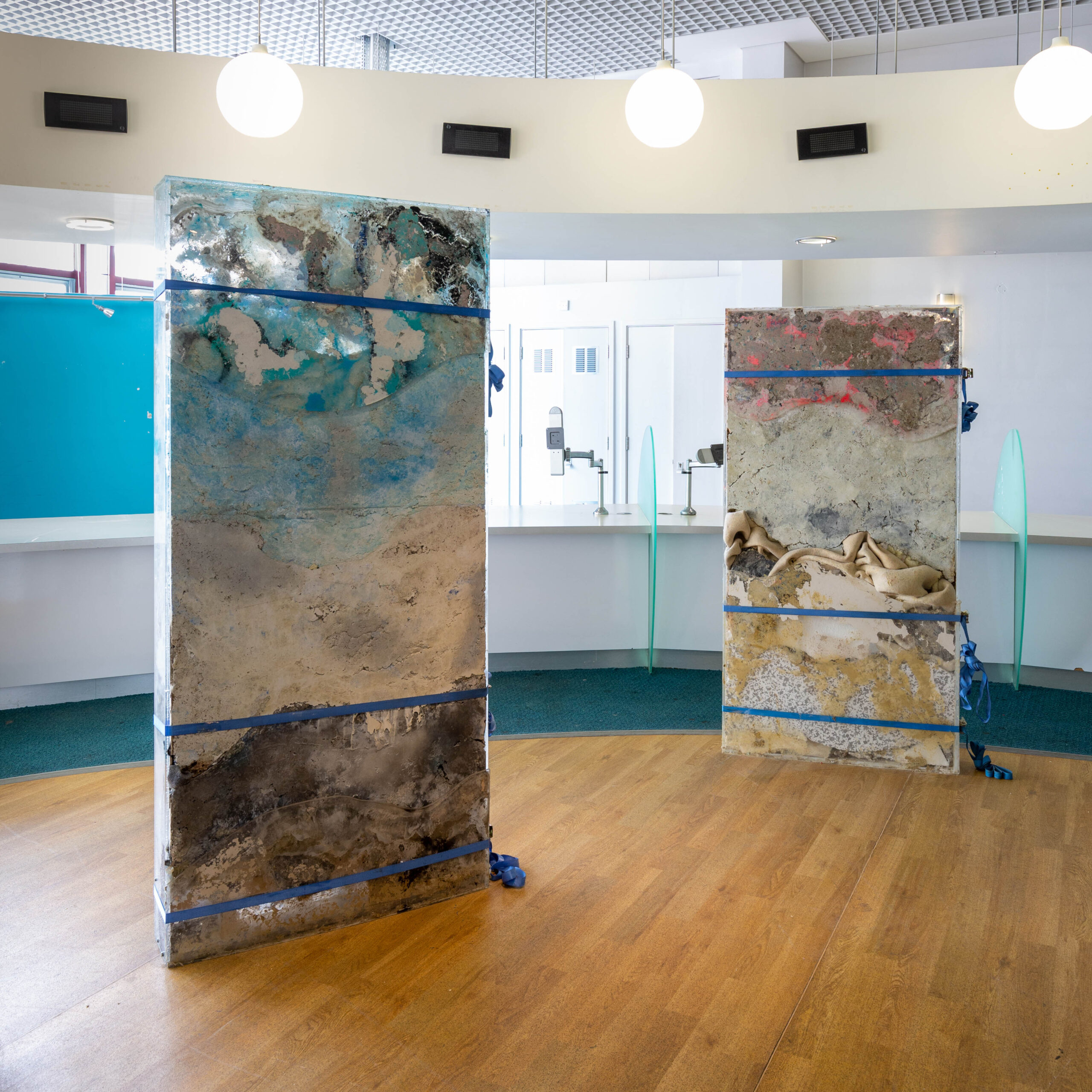
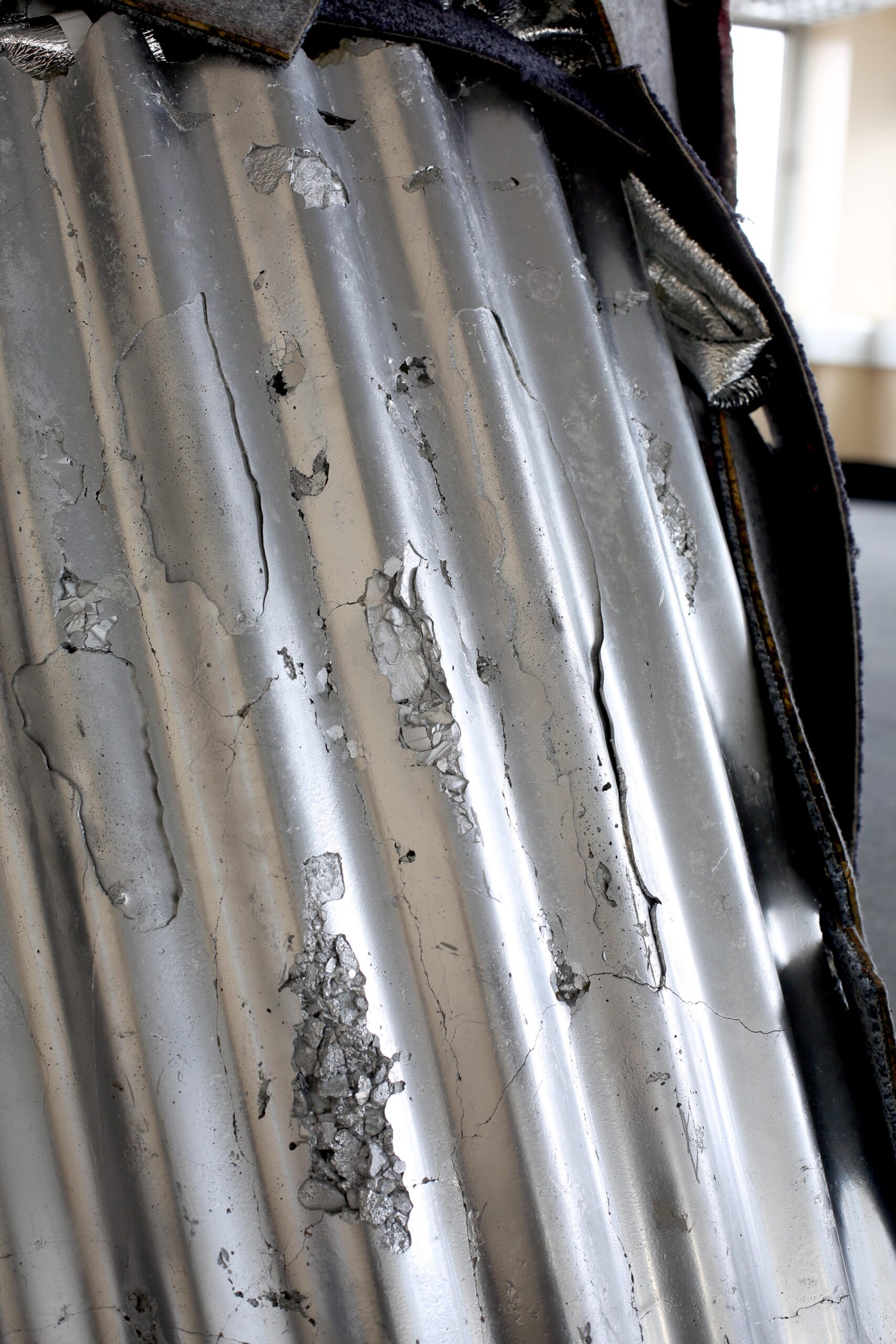
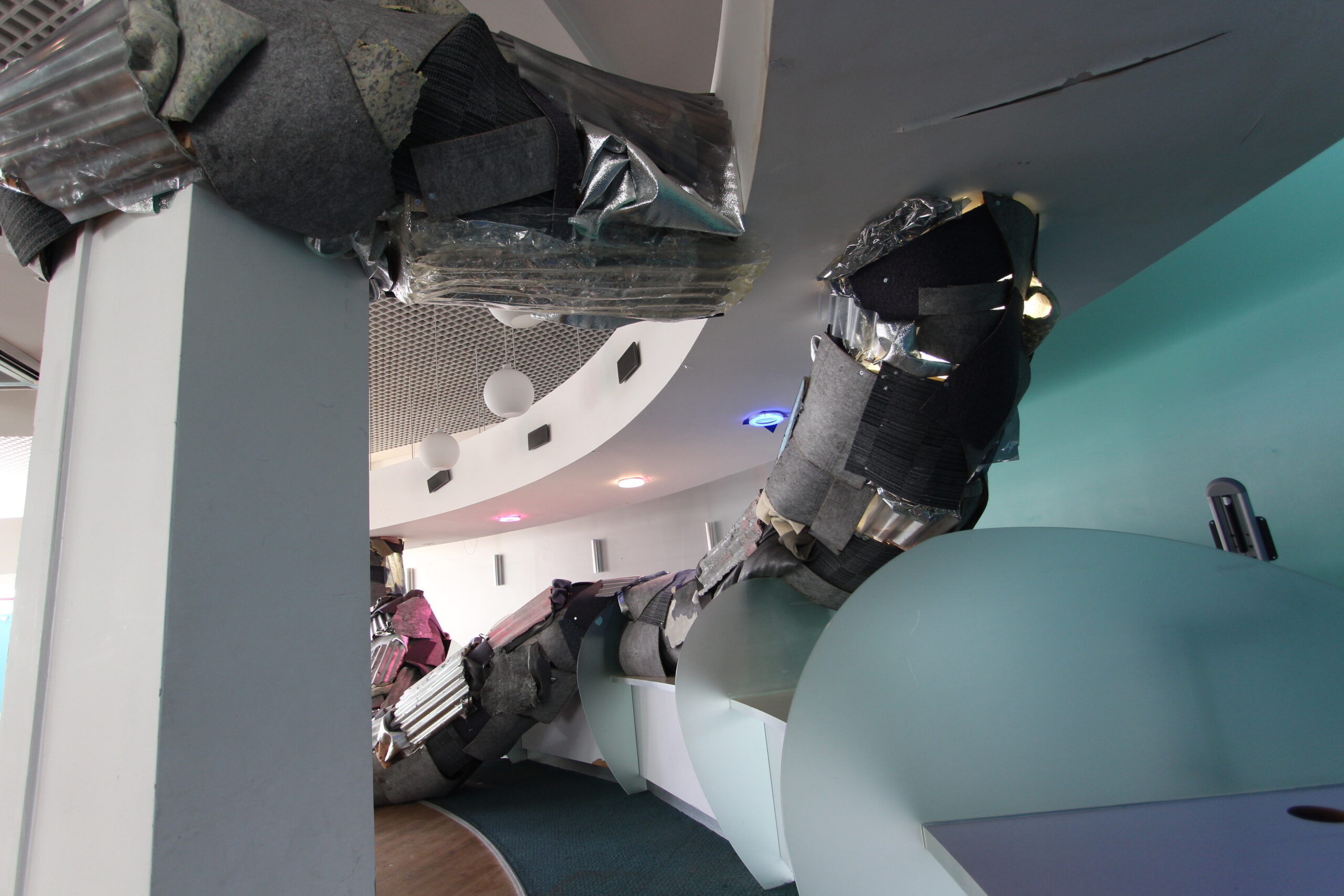

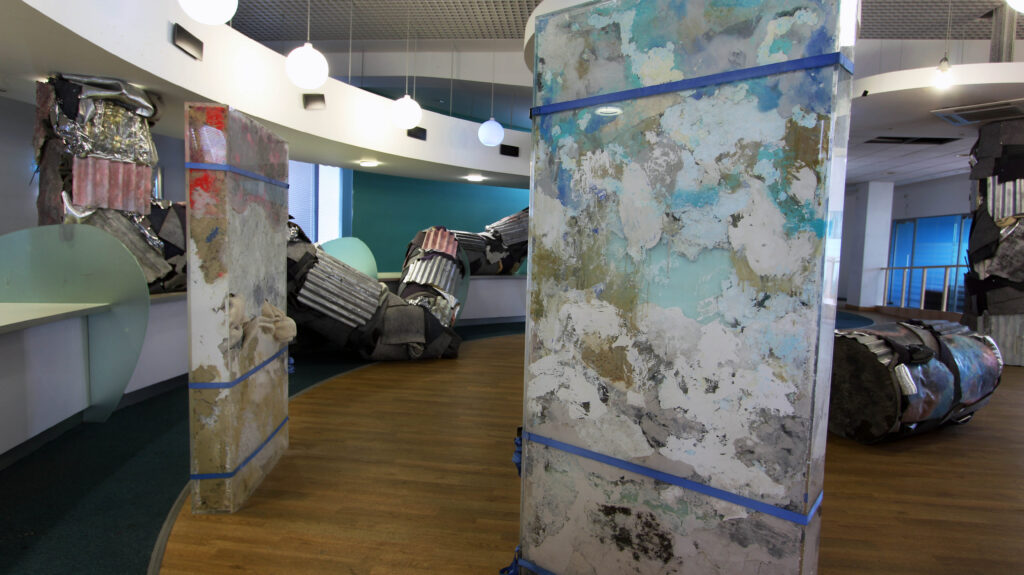
‘UNDERLAY’
Solo exhibition commisioned by SET Studios
5th September – 28th November 2021
Materials:
Carpet tiles, Paper-concrete, paper-mache, clay, soil, sand, packing foam, plastic packaging, discarded carpet underlay, reconstituted foam packaging, recycled polystyrene, polyurethane, timber, steel, plywood, perspex, acrylic paint, spray paint
Dimensions: Infinity and Beyond
This sculpture has taken on different forms in response to the architecture of the space and its materials. Using the discarded waste from SET, these monolithic worm-like creatures take over involuntarily – trying to hide or squeeze themselves into voids to get out of the room or the window that they are growing too big for. Compressed by the confinement of the city, they absorb and regurgitate detritus materials on their journey. The cast surfaces reveal layers of repurposed construction site and domestic waste that become the aggregate of a stone-like surface – resulting in an architectural assemblage of a column or a future ruin. This draws to question, what new deep time imprints are we creating with layers of landfill, concrete and toxic chemicals that we put into the ground? What aggregates will the new monuments and architecture of the future be made of: pliable, plastic, concrete of precarity?
Narrative texts for ‘Underlay’
‘Urban Strata’:
A network of invisible cities sleeps forgotten beneath the surface of the landscape. Interconnected passageways are carved out of the earth, burrowing through the mountains and concrete bedrock as roots, fungi, worms and humans tunnel through deep time. It is these hidden spaces below the ground that will be preserved, outliving crumbling concrete tower blocks that will eventually crack and collapse, to form a new urban strata made up of trace fossils of fridges, plastic and chemicals compressing over time and crystallises to form a post-human future.
Worms: Why worms? worms move the earth in the process of their meanderings. They eject castings and turn new layers of soil from their burrows on to the surface causing what is on top to slowly submerge. Monuments may be buried over decades. It is probable that many monoliths, walls and columns have fallen down from having been undermined by worms.
A weight of more than ten tons of dried Earth may pass annually through their bodies including the absorption of chemical fertilisers, toxic waste and human detritus in the ground. Pesticides and synthetic contaminants cause Earthworms to grow to only half their normal weight and reduce their fertility. They can ingest some of these contaminants, transforming them into less toxic substances, evolving to clean up our soil.
